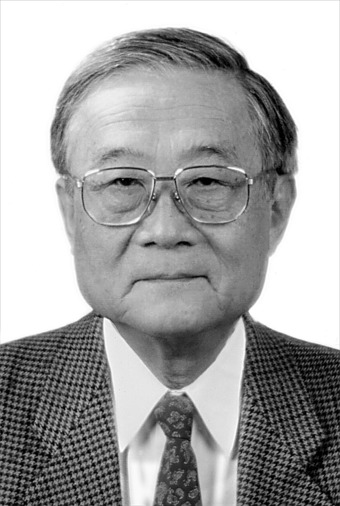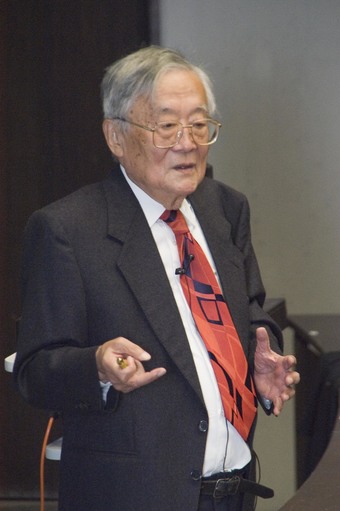Obituary: Professor Haruhiko Morinaga
2018-05-15 – News from the Physics Department
Haruhiko Morinaga was born in Tokyo in 1922, where he later also studied physics. In 1951 he obtained a research grant at Iowa State University, USA, where he was awarded an assistant professorship. After further stays at Purdue University, USA, and Lund, Sweden he returned to Japan in 1957. In 1967 he obtained a full professorship at the University of Tokyo. In 1968 he accepted a chair at Technische Hochschule München, now Technical University of Munich.
Groundbreaking advances to “In-Beam” gamma spectroscopy contributed to his international reputation. He was the first to observe gamma rays emitted of targets irradiated by alpha particles and developed a method to study the structure of nuclei at high angular momentum and after the formation of a compound nucleus – the basis of modern nuclear spectroscopy at highest angular momenta.
He had the idea to use the interdigital H (IH) structure for particle acceleration. The first accelerator of this type, called “SchweIN” (heavy ion post-accelerator), was realised at the MLL accelerator lab in Garching in 1976. This was the starting point for a wide range of further developments of accelerators and their applications.
Morinaga was several times scientific head of the joint accelerator lab of both Munich universities. After his retirement in 1991 he remaind active in physics and was occupied with questions on the use and storage of non-nuclear and non-fossile energy.
Morinaga authored a large number of publications and is co-author of the mongraph “In-Beam-Gamma-Ray-Spectroscopy”.
Among the awards he received is the Nishina-Memorial-Prize; in 1984 the University of Lund awarded him the degree of honorary doctor.
Further information
- in German: Professor Haruhiko Morinaga feiert 95. Geburtstag – 2017-10-10
Haruhiko Morinaga proposed a model to explain some important excited states of significant nulei including carbon. This model is still is a current research topic: recent investigations have largely verified it.
- APS Physics (2017): Viewpoint: Watching the Hoyle State Fall Apart
- IOP PhysicsWorld (2013): The secret of life

